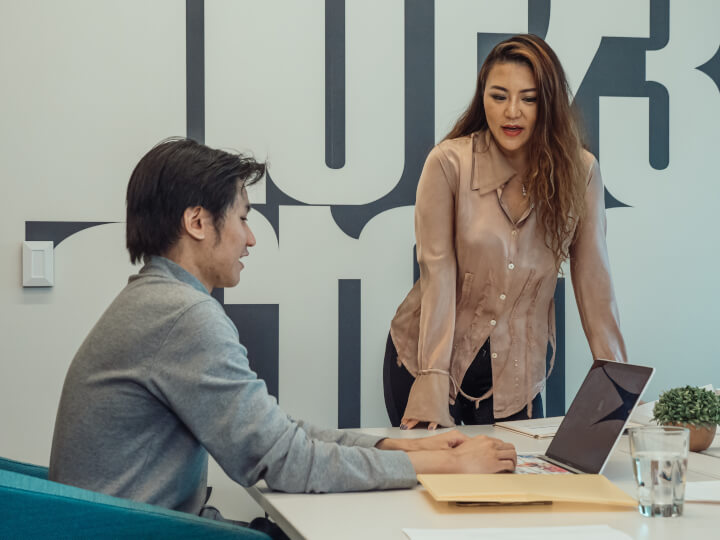The Critical Path Method (CPM), also known as Critical Path Analysis (CPA), is a powerful tool in project management, providing an analytical way of organizing and scheduling the various tasks involved in a project. It is a step-by-step technique for process planning that defines critical tasks, arranges them in a sequence, and uses this structure to identify the most efficient path to project completion.
Mastering the critical path method equips a project manager with the ability to efficiently manage complex projects by identifying the longest sequence of critical tasks (the "critical path") that must be completed on time for the project to be finished by its due date.
The critical path method identifies the longest sequence of critical tasks that must be completed on time for the project to be finished by the due date.
A deep understanding of this method allows the manager to allocate resources effectively, manage scheduling risks, and monitor project progress, which can make the difference between success and failure in the high-stakes world of project management.
In essence, mastery of the CPM technique is an indispensable skill that can elevate project delivery to new levels of precision and efficiency.
What is the critical path method in project management?
The critical path method is an algorithmic approach to project scheduling that helps project managers determine the sequence of activities, their duration, and the relationships between these activities. It visualizes the entire project as a network diagram, with nodes representing tasks or milestones and the connections (or edges) representing the dependencies between tasks.
The primary purpose of CPM is to determine the shortest time to complete a project. It achieves this by identifying a critical path, which is a sequence of tasks that directly impacts the project completion date. Any delay in the tasks along the critical path will lead to a delay in the entire project. Meanwhile, tasks not on the critical path may have some flexibility or "float" time, meaning they can be delayed without affecting the project’s end date.
The goal of CPM is twofold:
- To identify the tasks crucial for on-time project completion (i.e., the tasks on the critical path). This allows project managers to prioritize and monitor these tasks with extra care.
- To clarify each task's start and end dates, making it possible to allocate resources efficiently and avoid bottlenecks.
The critical path method shapes the trajectory of projects. It can gain insight into the interdependencies of tasks and influence project timelines. Project managers can navigate potential pitfalls with this approach. Additionally, CPM fosters transparent communication, enabling stakeholders and team members to align their efforts seamlessly.
How to calculate and implement critical path
This guide will walk you through the essential steps to calculate and implement CPM effectively.
1. Understand project scope and objectives
Before diving into calculations and network diagrams, it's essential first to have a thorough understanding of the project's scope and objectives. Begin by defining the project’s primary goals, deliverables, and any constraints or limitations. A foundation will guide the detailed breakdown and sequencing of tasks. For a comprehensive guide on setting up your project's foundational blueprint, explore how to create a project management plan.
2. Identify all tasks and dependencies
Once the project's scope is clear, list out all the tasks or activities required for project completion. When tasks are listed, identify the dependencies between them. Which tasks rely on the completion of others to begin or proceed? These dependencies are crucial for mapping out the project's flow.
3. Draw the network diagram
With tasks and dependencies in hand, sketch the project's network diagram. This visual representation will show all tasks, represented as nodes, and their dependencies, represented as arrows. There are multiple ways to draw such graphs, but the goal remains consistent: to visualize the flow and sequence of tasks.

Tip: Remember that the network diagram will have a starting and an ending node, representing the project's beginning and conclusion. Ensure you include all paths from beginning to end.
4. Estimate task durations
Assign a time duration for each task. These estimations can be based on historical data, expert judgment, or a combination of both. The accuracy of these durations directly affects the precision of the critical path calculation.
5. Calculate the critical path
Here's where the magic happens. The critical path is the longest path through the network diagram, indicating the shortest time to complete the project. To identify it:
- Forward pass: Calculate each task's earliest start (ES) and earliest finish (EF). Start with the initial task, which will have an ES of 0, and move forward, adding task durations to determine each subsequent EF and ES.
- Backward pass: Calculate each task's latest start (LS) and latest finish (LF). Start with the final task, which will have an LF equal to its EF, and move backward, subtracting task durations.
- Slack time: For each task, subtract its ES from its LS (or its EF from its LF) to determine its slack or float. Tasks with a slack time of zero are on the critical path.
6. Solve resource shortages
Once the critical path is identified, resource allocation becomes the focal point. You should prioritize tasks on the critical path. If resource shortages are identified, you can apply strategies like resource leveling to ensure the essential tasks of the path are not delayed.
Effective resource management ensures tasks are carried out seamlessly and without delay. For a comprehensive understanding of optimizing and managing your project resources, delve into resource management’s importance and optimization.
7. Inform your schedule
With the critical path and resource allocations in hand, finalize the project schedule. This schedule should highlight the essential tasks of the path and clarify when non-critical tasks, which have some slack, should be undertaken. Check out these project scheduling techniques for a deeper dive into effective scheduling.
Effective scheduling goes hand-in-hand with good time management. To ensure that every moment counts and tasks are executed efficiently, explore some time management strategies tailored for project managers.
8. Monitor and adjust
Lastly, CPM is not a set-it-and-forget-it tool. As the project progresses, monitor task completions, especially those on the critical path. If delays occur or tasks are completed ahead of schedule, adjust the project timeline and resource allocations as necessary.
It's also crucial to be aware of potential risks that could disrupt the project. To understand and be better prepared for such uncertainties, familiarize yourself with risk triggers in project management.
Tip: The world of project management is rapidly evolving with advancements in remote work and digital tools. Today, virtual project managers lead diverse global teams toward achieving common goals. In these dynamic settings, methodologies like CPM are even more vital. As we tread further into this digital age, gaining insights about the roles and benefits of a virtual project manager becomes essential for anyone in the field.
Having dissected the intricacies of the CPM, it's evident that it's not just about calculations or identifying tasks; it's about effective project visualization and communication. In an age of limited attention spans, making your project presentations interactive and engaging becomes vital. Explore interactive presentation ideas to elevate your project presentations, which can transform dense data into captivating visuals and narratives.
Why the critical path method is an important strategy skill to master
Mastering CPM is an indispensable strategy skill. At its core, CPM is not just about timelines and tasks; it's about optimizing workflow, managing risks, and ensuring that every piece of a project aligns seamlessly to achieve the overarching goals.
In the short term, it provides a clear, real-time snapshot of where a project stands, highlighting potential bottlenecks and areas of concern. Looking at the broader horizon, CPM serves as a compass for long-term project strategizing, helping organizations streamline operations, maximize resource utilization, and consistently deliver projects on time, reinforcing their reputation and trustworthiness in the market.
Benefits of CPM include the following:
- Optimal resource allocation: CPM allows project managers to prioritize tasks based on their significance in the project timeline. It ensures critical activities receive the necessary resources, preventing delays and cost overruns.
- Enhanced risk mitigation: Project managers can preemptively identify potential bottlenecks and challenges by spotlighting the critical path. This proactive approach enables them to devise contingency plans, ensuring the project remains on track even when unforeseen issues arise.
- Informed decision-making: With a comprehensive view of the project's structure, managers are better equipped to make strategic decisions, whether it's accelerating specific tasks, reallocating resources, or negotiating deadlines with stakeholders.
- Efficient communication: The visual nature of CPM contributes to transparent communication. Stakeholders can quickly grasp the project's progress, dependencies, and potential challenges, fostering an environment of trust and collaboration.
- Cost efficiency: CPM can significantly reduce overhead costs by ensuring tasks are completed in a streamlined and timely manner. Delays often lead to financial overruns—a well-managed critical path minimizes these unexpected expenses.
- Strengthened team collaboration: Understanding task interdependencies promotes collaboration among team members. When everyone knows how their work impacts the overall project, a more cohesive and synergistic team environment is fostered.
- Consistent project delivery: Over time, the consistent application of CPM ensures projects are completed within the stipulated timeframe, establishing an organization's reputation for reliability and excellence in critical path project management.
The critical path method is about optimizing workflow, managing risks, and ensuring that every piece of a project aligns seamlessly to achieve the overarching goals.
In essence, the CPM is more than a tool: It's a strategic skill that, when mastered, can elevate an organization's project management capabilities, driving immediate and long-term success.
Skill-building: How to master the critical path method
Mastering the CPM is akin to developing a strategic mindset—it demands understanding a project's macro and micro aspects. While the fundamental principles behind CPM might be simple to grasp, truly mastering this technique involves delving deep into the nuances of critical path project management, understanding the interplay between tasks, and developing a keen sense of potential pitfalls and opportunities.
As with any advanced skill, implementing CPM requires a mix of theoretical understanding, practical application, and continuous refinement based on real-world experiences.
While it's essential to get to grips with the intricacies of CPM, being effective in its application in today's business environment means embracing a data-driven mindset. A data-driven company culture is not just about gathering data but about making informed decisions based on that data. This principle aligns closely with the core tenets of CPM.
Ways to Learn CPM:
- Formal education: Consider enrolling in project management courses at universities or specialized institutions. Many offer dedicated modules or CPM courses, providing theoretical knowledge and practical exercises.
- Online courses & tutorials: GoSkills offers comprehensive courses in project management, including core topics such as CPM. GoSkills is a PMI Authorized Training Partner and our courses include include bite-sized video lectures, quizzes, and assignments, providing an engaging learning experience.
- Project management certification: Pursue certifications like PMP (Project Management Professional) or PRINCE2. These certifications cover CPM in detail and offer a broader understanding of project management techniques and best practices.
- Hands-on practice: Theory is only half the battle. Apply CPM in real-world scenarios, starting with smaller projects. Hands-on experience is invaluable and offers insights that textbooks or courses might miss.
- Mentorship: Seek out seasoned project managers who have extensive experience with CPM. Their guidance, insights, and feedback can be instrumental in refining your understanding and application of the method.
By embracing structured learning and practical experience, you can gradually hone your expertise in the CPM, transforming it from a mere tool into a strategic skill that can profoundly impact your project management prowess.
A data-driven company culture is not just about gathering data but about making informed decisions based on that data.
For those eager to delve deeper into the world of project management and stay updated with the latest trends and insights, here are some of the best project management blogs to follow.
Conclusion
In the dynamic and often intricate world of project management, the critical path method (CPM) emerges as an invaluable skill, acting as both a strategic compass and a tactical roadmap.
By highlighting the sequence of tasks that are pivotal to a project's timely completion, CPM offers project managers the clarity to navigate potential pitfalls, allocate resources wisely, and communicate effectively with stakeholders. But mastery of CPM, like any advanced skill, requires dedication, practice, and the right educational resources.
GoSkills stands as a beacon for those seeking to upskill or venture into new realms of knowledge. Whether you're refining existing expertise or stepping onto an entirely new learning path, GoSkills provides comprehensive training resources tailored to your needs.
Ready to solidify your understanding of CPM and elevate your project management capabilities? Get certified in project management at GoSkills and set yourself apart in the ever-evolving world of business and strategy.
Prepare to get certified in project management
Start learning today with GoSkills courses
Start free trial



